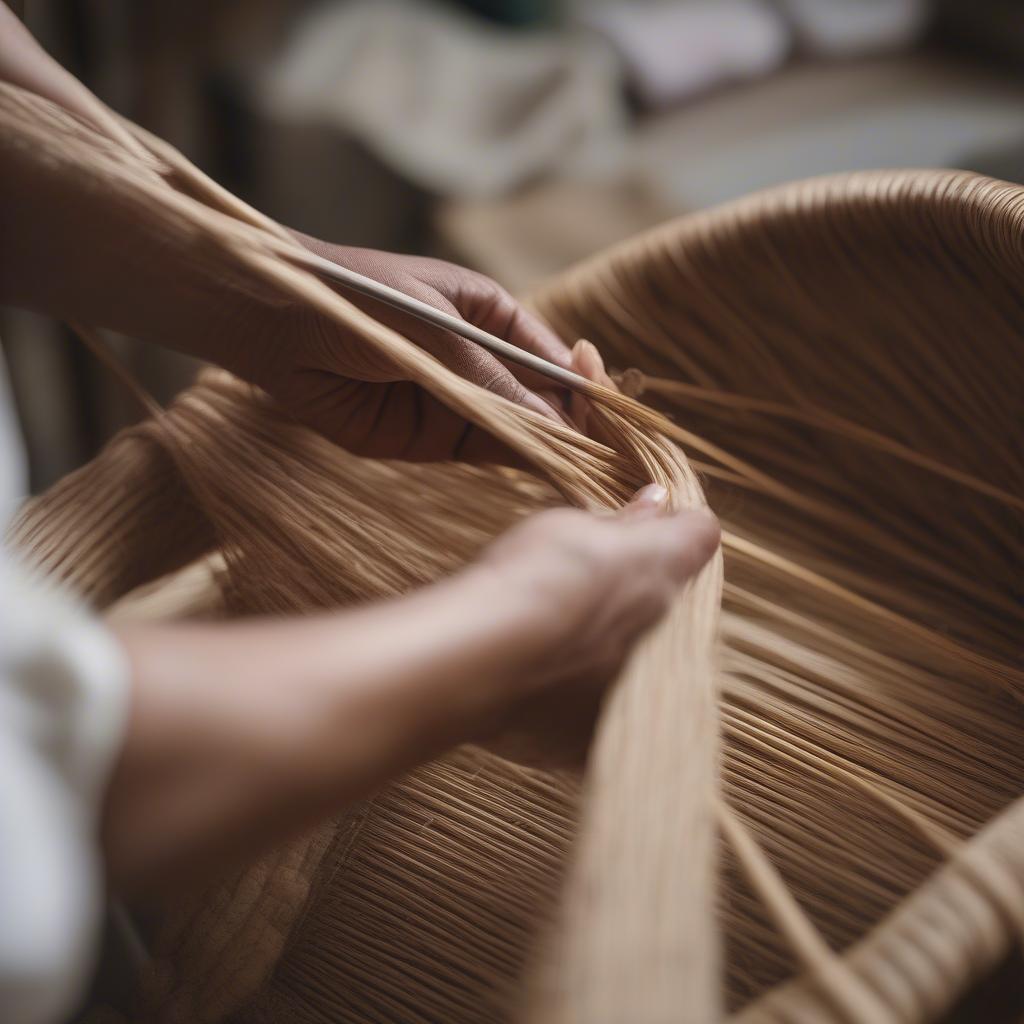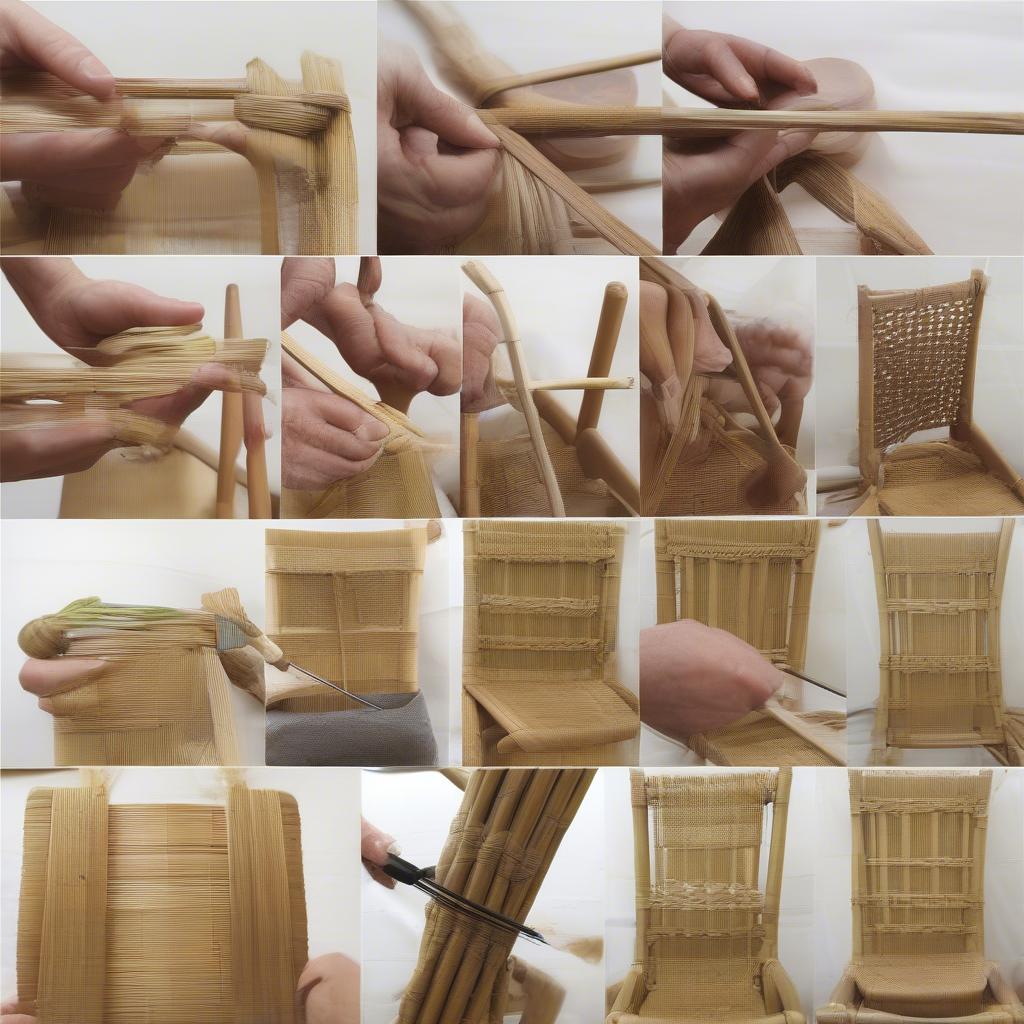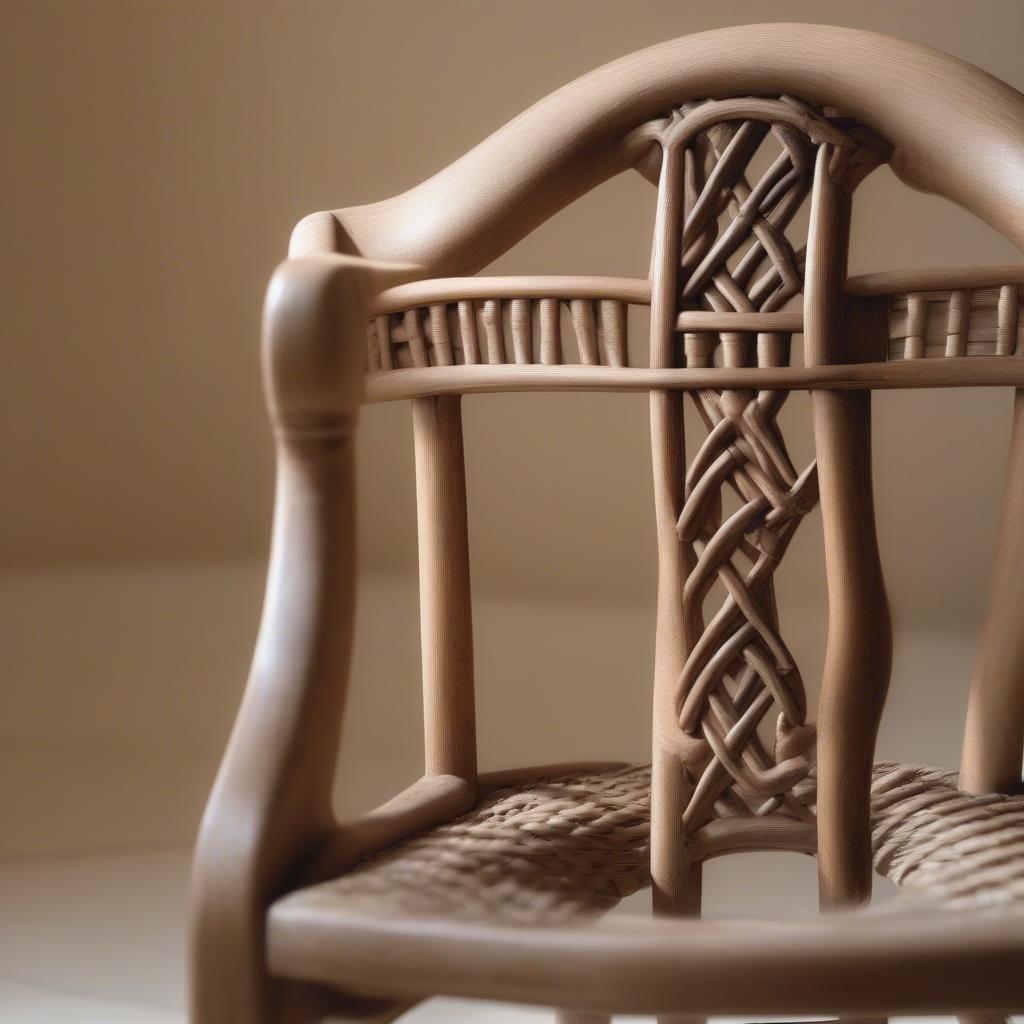Weave Chair
How to Weave Cane Chair Seats
Learning How To Weave Cane Chair Seats can be a rewarding experience, transforming a worn-out chair into a beautiful and functional piece of furniture. Whether you’re restoring a family heirloom or simply enjoying a new craft, this guide will provide you with the necessary steps and insights to achieve professional-looking results.  Close-up of hands weaving cane into a chair seat, demonstrating the intricate process of traditional cane weaving.
Close-up of hands weaving cane into a chair seat, demonstrating the intricate process of traditional cane weaving.
Understanding Cane and Its Preparation
Before diving into the weaving process, it’s crucial to understand the material you’ll be working with. Cane is a natural material derived from the rattan palm. Its flexibility and strength make it ideal for chair seats. Selecting high-quality cane is the first step towards a successful project. Look for cane that is uniform in color and thickness, free from cracks or splits. Soaking the cane in warm water for about 30 minutes before weaving makes it pliable and easier to manipulate. This also prevents the cane from breaking during the weaving process.
After soaking, allow the cane to drain and become slightly damp before starting. This dampness ensures the cane tightens as it dries, creating a taut and durable seat. For a deeper dive into cane weaving techniques, check out our guide on cane weaving chair seats.
Tools and Materials You’ll Need
Gathering the right tools and materials will make the weaving process smoother and more efficient. Here’s what you’ll need:
- Pre-woven cane webbing: This simplifies the process, especially for beginners.
- Scissors: For cutting the cane to the desired length.
- Flat-head screwdriver or awl: For guiding the cane through the holes.
- Mallet: For tapping the cane securely into place.
- Measuring tape: For accurate measurements.
- Pencil: For marking the cane.
Step-by-Step Guide to Weaving a Cane Chair Seat
This section will guide you through the weaving process.  Step-by-step illustration of the cane weaving process for a chair seat, highlighting the key stages and techniques.
Step-by-step illustration of the cane weaving process for a chair seat, highlighting the key stages and techniques.
- Measure and Cut: Measure the chair seat opening carefully. Add a few extra inches to each side of the pre-woven cane webbing to allow for trimming. Cut the webbing to size.
- Center and Secure: Position the pre-woven cane webbing centrally over the seat opening. Secure it temporarily with tacks or staples at the center of each side.
- Weave the Edges: If your seat requires individual cane weaving around the edges, begin by weaving through the pre-drilled holes in the chair frame, following a specific pattern. Common patterns include the seven-step and the herringbone weave. Refer to how to weave chair sash for detailed instructions.
- Secure and Trim: Once the weaving is complete, secure the ends of the cane by tucking them under the woven strands. Use a mallet to gently tap the cane into place, ensuring a tight and even surface. Trim any excess cane with scissors.
Tips for a Professional Finish
Achieving a professional-looking finish requires attention to detail and a few helpful tips.
- Consistent Tension: Maintain even tension throughout the weaving process. This prevents sagging and ensures a uniform appearance.
- Clean Cuts: Make clean, straight cuts when trimming the excess cane. This creates a neat and polished look.
- Finishing Touches: Applying a coat of sealant to the finished cane seat can protect it from moisture and enhance its durability.
Frequently Asked Questions
What is the best type of cane for chair seats?
High-quality, unbleached cane is ideal for chair seats due to its strength and flexibility.
How do I fix a broken cane strand?
You can carefully replace a broken strand by weaving a new piece of cane alongside the broken one and securing it with glue.
Can I paint a cane chair seat?
Yes, you can paint a cane chair seat. However, it’s important to choose a paint that is flexible and adheres well to cane.
Are you looking for other natural materials to weave with? Check out our guide on weave rush chair seat. What is the correct terminology for this craft? Learn more about what is the word for weaving chair seats.
In conclusion, learning how to weave cane chair seats can be a satisfying and enjoyable project. By following the steps outlined in this guide and paying attention to detail, you can restore or create beautiful and functional furniture. Want to learn about weaving with cloth? Visit our page on cloth wooden chair weave.  A beautifully restored chair with a newly woven cane seat, showcasing the finished product of the cane weaving process. When you need assistance, please contact our Hotline: +84 388 951 999, address: Hanoi, Vietnam or Tech Avenue, Suite 12, San Francisco, CA 94105, USA. We have a 24/7 customer service team.
A beautifully restored chair with a newly woven cane seat, showcasing the finished product of the cane weaving process. When you need assistance, please contact our Hotline: +84 388 951 999, address: Hanoi, Vietnam or Tech Avenue, Suite 12, San Francisco, CA 94105, USA. We have a 24/7 customer service team.
